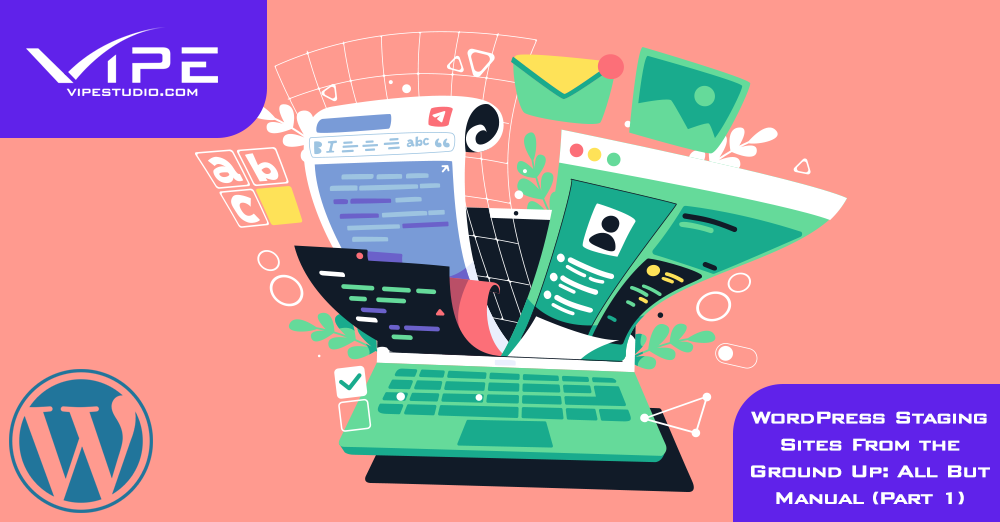24.07.2021
WordPress Development
WordPress Staging Sites from the Ground Up: All But Manual (Part 1)
READING TIME: MIN
Table of Content
If you’ve been following our tips and tutorials, or even just the guidelines of your own WordPress agency for development, you’ve definitely been trying out a lot of neat tricks and tips to optimize your experience as a WordPress site administrator.
However, trying out a multitude of new experiments on your live website with no backup plan can be a recipe for disaster. The safest way to do WordPress is to never subject your live site to your experiments; we’ve always recommended staging sites – even if it’s for something as simple as changing a theme – heck, it’s even one of our top recommendations for WordPress.

Staging site – what’s that?
For all intents and purposes, we create an exact copy of the live website called the staging site which, nevertheless, can be changed without causing any changes to your live website. A staging site isn’t customer-facing and is built by design to prevent you from something up beyond salvaging.
Create a Staging Site
In this part 1 of our series on Staging Sites, here are the first two of three ways that a staging site can be created:
- Use a web host
- Use a plugin
- The manual route
First, you need to decide what changes you’d like to make; this in turn will decide your choice of the method. For instance, if you just want to try out a new theme, the plugin method will suffice, but the more complicated your changes, the more you ought to consider the manual route.

Method 1 – Use a Web Host
A majority of web hosting provides will offer staging sites as a feature by default. Configuring a staging site can be quite easy, and some hosts will also allow merging the changes made on a staging site onto the live site, though this isn’t a given and might even incur additional charges. Regardless, you ought to choose a staging site if your WordPress website has the scope and complexity that could lead to serious glitches because of irreversible changes.
Method 2 – Use a Plugin
This is the easier DIY method for creating your own staging site, and WP Staging is the one we’ll be using today. There are other alternatives, of course, but none of them come close to the convenience offered by WP Staging. Follow these steps:
1. Install and Access the Plugin
Post installation, you’ll find the new ‘WP Staging’ tab in your WordPress dashboard.
2. Create and Name the Staging Site
Click on this tab to create the staging site, and you can then give it a new name – such as ‘Shadow site’ or ‘Clone’, whatever you like.
3. Start Cloning.
Once done, click on ‘Start Cloning’. This is a reasonably long process because the plugin will have to copy all files, replicate database tables and create new links. When it is done, it’ll prompt you for your administrative login, so that you can open the new staging website.

And that’s it, you can get to work testing out all the changes you’ve been reading about on our blog, or from any expert WordPress agency for development! The orange-colored bar at the top will constantly remind you that you’re not working on the live site, but the staging site.
Of course, if you’d like to do much more than test out other new plugins or themes – like tinkering with code – the WP Staging method might not serve your interests. You’d be better off using the manual method, which we will describe next time, in part 2 of this series on Staging Sites for WordPress. Until then, stay safe and Happy WordPress-ing!
More on The Topic
- Scaling WordPress Without Losing Culture
- WordPress 6.9 “Gene”: What This Release Really Changes
- Managing Gutenberg Chaos at Scale
- The Real Difference Between Managed and Developer-Oriented Hosting
- WordCamp Sofia 2025: A Full Recap of Bulgaria’s Biggest WordPress Event
Tags: backupsecuritystagingWordPresswordpress developmentwordpress website
The content of this website is copyrighted and protected by Creative Commons 4.0.



